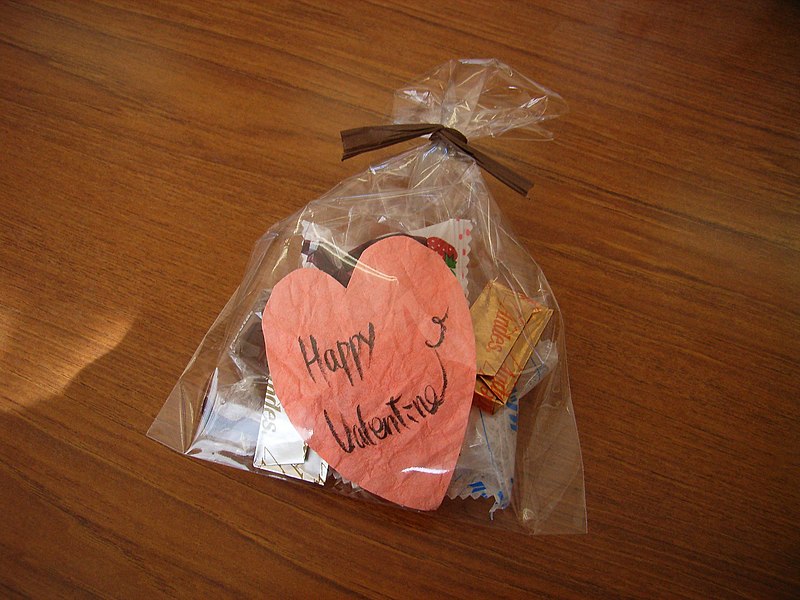| 图片: | |
|---|---|
| 名称: | |
| 描述: | |
- 日本女性过另类情人节
日本女性过另类情人节
来源: 新华网
2月14日西方传统情人节,日本女性一改西方传统,主动购买巧克力礼物,赠送包括同事、爱人或情人在内的异性朋友。
这一惯例催生日本巧克力市场的“二月旺季”。
不同于大部分国家情人节互赠礼物的传统,日本女性通常在这天向男性赠送巧克力,包括情人、同事和上司等;男士们则不需要为女方准备礼物,坦然等待身边女性朋友或者同事不断涌来的礼物。
不过,男士在3月14日“白色情人节”这天需要向女方回赠白色礼物。
法新社报道,日本女性向男性赠送的巧克力传统上分为两种,一是“义理巧克力”,用于赠送普通关系的异性;二是“真爱巧克力”,用于赠送关系亲密的异性,例如男朋友或丈夫。
为招揽顾客,日本百货商店和巧克力制造商通常自1月初至2月14日在全国举行大型活动,一些商家还在情人节期间从国外邀请糕点师。
一些日本女性今年不再选择赠送男性传统的巧克力礼盒,而是利用3D打印机,制作以自己的脸为模型的“人脸”巧克力。
首都东京涩谷一家咖啡厅近来开放“人脸”巧克力工作室,为期两天。3D扫描机扫描人脸后制作硅质模具,并在模具内灌注巧克力,一个拇指大小的人脸巧克力便成型。
“我男朋友看到我的人脸巧克力后,可能会吓到,”30岁的经理海内美和(音译)说,“我希望他(男朋友)不会把我的脸扔掉。”
4岁女孩汤浅密(音译)和母亲一同前来制作人脸巧克力。她说:“我想做许多人脸巧克力,来吓幼儿园朋友一跳。”
制作一次人脸巧克力花费近65美元,两天内吸引50多名申请者。不过,只有15人有机会拥有自己的人脸巧克力。
鉴于这一只限女性的人脸制作体验取得成功,组织者打算在白色情人节期间向男性推出这种体验。
在大型百货公司高岛屋,一整层被用于售卖情人节巧克力。女性消费者挤满巧克力展览,热切希望品尝来自国际巧克力制造商的最新产品。
“日本巧克力市场在持续增长,”比利时巧克力品牌“戈黛娃”一名主管说,同西方国家相比,日本赠送巧克力的风俗“独特”。这家巧克力制造商30%销售额来自情人节销售。
日本共同社援引一项调查显示,今年的情人节礼物花费将比去年多,表明情人节销售升温。根据东京一家百货公司对421名女性的调查,“真爱巧克力”的平均预算从去年33美元提高至37美元,平均每名女性购买10.4盒“义理巧克力”。
法新社报道,巧克力1797年引入日本,迄今已在日本民众生活中占据相当地位。如今,日本是亚洲最大的巧克力市场,在世界巧克力市场中占据重要份额。
据毕马威管理咨询公司估计,去年全球巧克力销售额约1000亿美元。日本一年消费的巧克力大约110亿美元,在世界首屈一指,其中一半巧克力消费出现在2月。
情人节上世纪50年代开始在日本兴起。第二次世界大战后,日本经济开始复苏。白色情人节20年后开始流行,男性当天需要向认识的女性赠送白色礼物,近年开始流行向女性赠送内衣。
-
本帖最后由 Rebecca 于 2013-02-15 23:32:13 编辑
White Day (ホワイトデー Howaito Dē) is a day that is marked in Japan, South Korea, Taiwan and China on March 14, one month after Valentine's Day.
In Japan
In Japan, Valentine's Day is typically observed by girls and women presenting chocolate gifts (either store-bought or handmade), usually to boys or men, as an expression of love, courtesy, or social obligation. Handmade chocolate is usually preferred by the recipient because of the perception of sincerity, effort, and emotion put into a home-made confection. On White Day, the reverse happens: men who received a honmei-choco (本命チョコ, "chocolate of love") or giri-choco (義理チョコ, "courtesy chocolate") on Valentine's Day are expected to return the favor by giving gifts. Traditionally, popular White Day gifts are cookies, jewellery, white chocolate, white lingerie, and marshmallows.Sometimes the term sanbai gaeshi (三倍返し, literally, "triple the return") is used to describe the generally recited rule that the return gift should be two to three times the cost of the Valentine's gift.
In other Asian Countries
There are slightly different White Day tradition in other Asian countries. For example, in South Korea, boys or men give candies to girls or women, however, this is mostly between couples and lovers. In China, the tradition is opposite from its Japanese one. On Valentine's Day, boys or men give chocolate to girls or women and the opposite on the White Day. In Taiwan, the White Day tradition is not as big as in Japan.
Origin
White Day was first celebrated in 1978 in Japan. It was started by the National Confectionery Industry Association as an "answer day" to Valentine's Day on the grounds that men should pay back the women who gave them chocolate and other gifts on Valentine's Day. In 1977, a Fukuoka-based confectionery company, Ishimuramanseido, marketed marshmallows to men on March 14, calling it Marshmallow Day (マシュマロデー Mashumaro Dē).
Soon there after, confectionery companies began marketing white chocolate. Now, men give both white and dark chocolate, as well as other edible and non-edible gifts, such as jewellery or objects of sentimental value, or white clothing like lingerie, to women from whom they received chocolate on Valentine's Day one month earlier. If the chocolate given to him was Giri choco, the man likewise may not be expressing actual romantic interest, but rather a social obligation.
Giri choco
Giri choco (義理チョコ, literally, "obligation chocolate") is chocolate given by women to men on Valentine's day in Japan. It is a relatively cheap type of chocolate women give to male co-workers, casual acquaintances, and others to whom they have no romantic attachment.
Men generally reciprocate by giving women cookies and other gifts on White Day, celebrated on March 14.
一袋Giri巧克力(義理チョコ)

2月14日情人节当天,保育园的小朋友麻央在妈妈的带领下,特意到网友儿子一龙君住地送来了情人巧克力。![[心] [心]](http://img.t.sinajs.cn/t4/appstyle/expression/ext/normal/40/hearta_org.gif)
![[鼓掌] [鼓掌]](http://img.t.sinajs.cn/t4/appstyle/expression/ext/normal/36/gza_org.gif) 这种巧克力就是一种Giri朱古力。表达的是一种友善、友情、友好。
这种巧克力就是一种Giri朱古力。表达的是一种友善、友情、友好。
Honmei choco
Honmei Choco (本命チョコ, literally, "true feeling chocolate") in Japan is chocolate given by women on Valentine's day to men whom the giver has romantic feelings for. This is often given to boyfriends, prospective boyfriends, and husbands. Honmei chocolate is usually higher-quality and more expensive than giri choco ("obligation chocolate"), which is given to male coworkers and other men the woman has no romantic attachment to.
The word "Honmei" originates from horse racing and refers to the favored horse in that race.
Homemade honmei choco is also popular.
This is generally reciprocated on White day, celebrated on March 14, when men buy candy and gifts for women.
Honmei 巧克力一般比较讲究,也注重包装,更注重自做的。是不太一样哦。
这里蕴含日本文化元素——‘義理’ is a Japanese value roughly corresponding to "duty", "obligation", or even "burden of obligation" in English.所以男生或男士将来去日本学习或工作时如果在情人节那天收到日本女同学、女同事的巧克力时,头脑要放清醒一点哦。并要记得1个月后——3月14日白色情人节那天要送还三倍价钱的礼物哟。
谢谢楼主让我们学习了解了日本情人节的多重涵义。

- 三十功名尘与土,八千里路云与月。
-
本帖最后由 Rebecca 于 2013-02-16 14:40:19 编辑

Black Day (April 14) is a South Korean informal tradition for single people to get together and eat jajangmyeon (noodles with black bean sauce 韩式黑豆调料炸酱面); sometimes a white sauce is mixed for those who did not celebrate White Day.
The idea is that those who did not give or receive gifts on Valentine's Day (February 14) or White Day (March 14) can get together and eat jajangmyeon, white Korean noodles with black bean sauce, to celebrate their singledom.
Happy the Black Day in Korea! (14 April)

- 三十功名尘与土,八千里路云与月。























